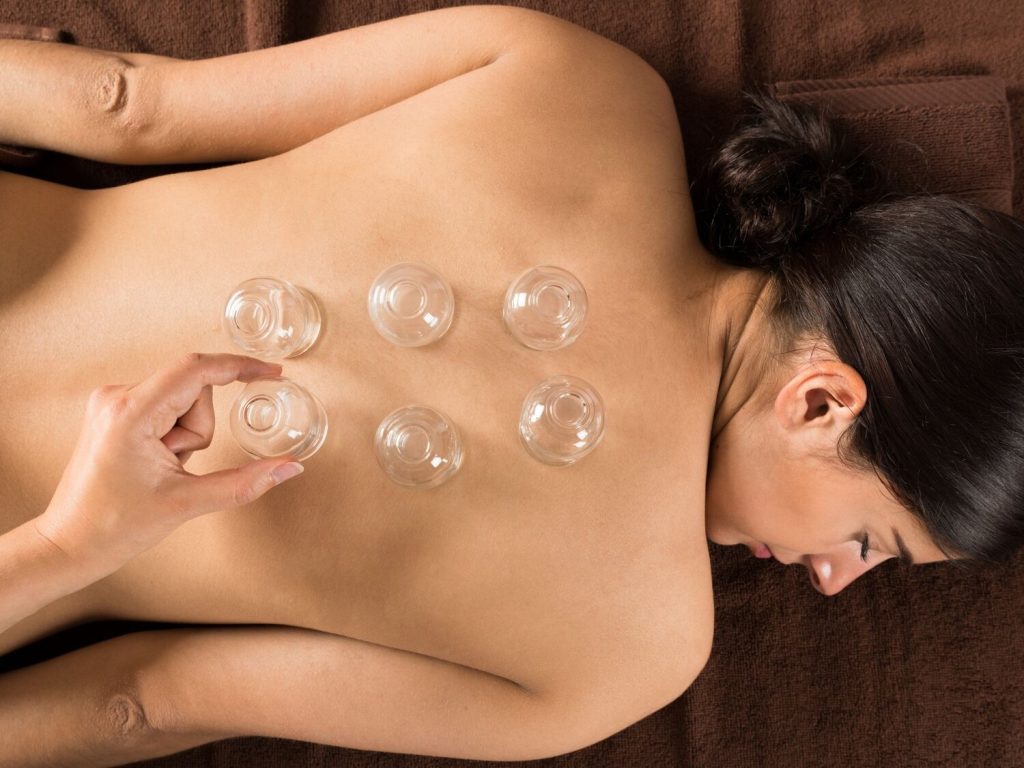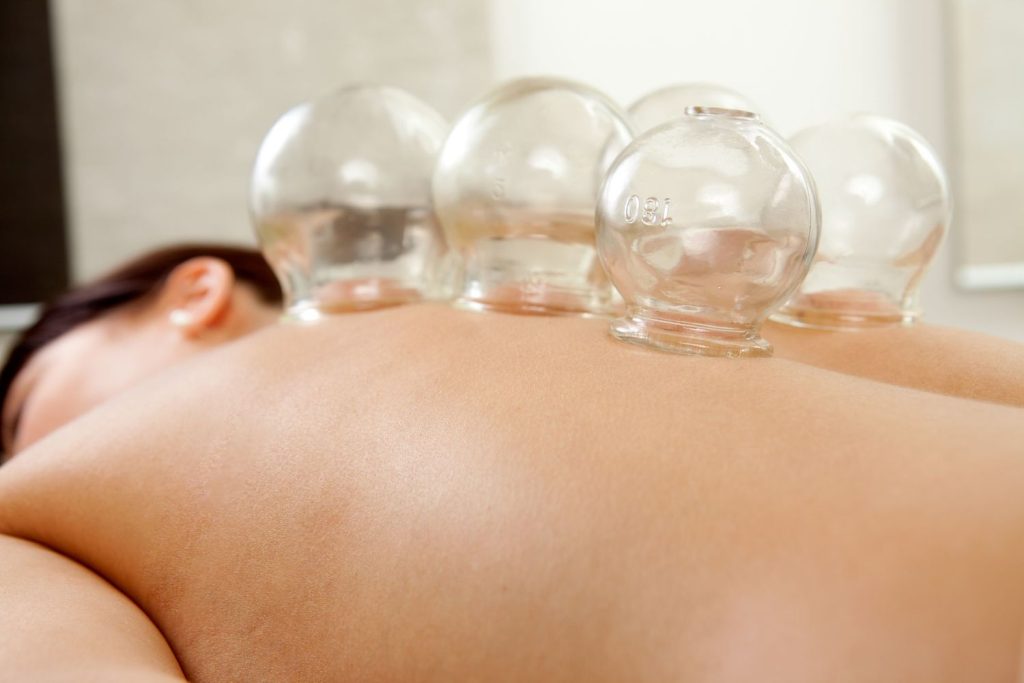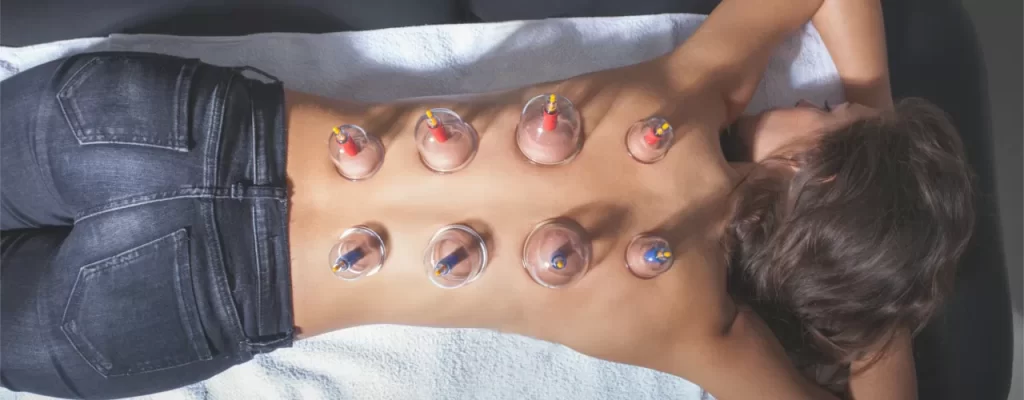What is Cupping Therapy?
Cupping therapy is an ancient healing practice that involves creating suction on the skin’s surface using glass, silicone, or bamboo cups. The suction is created by either heating the cups to create a vacuum or using a pump mechanism to draw the air out of the cups. Once the cups are placed on the skin, they are usually left in position for a few minutes.


Here’s how cupping therapy typically works:
- Creating suction: The therapist creates suction by placing the cup on the skin and either heating the air inside the cup or using a pump to create a vacuum. As a result, the skin and superficial muscle layers are drawn into the cup.
- Cup placement: The cups are placed on specific areas of the body, often along the meridians or energy pathways used in traditional Chinese medicine. The placement of cups is based on the individual’s condition and the desired therapeutic outcome.
- Duration of application: The cups are typically left in place for a few minutes, during which the suction and negative pressure help to mobilize blood flow, relieve muscle tension, and promote healing.
Cupping therapy is believed to provide a range of potential benefits, including:
- Pain relief: Cupping therapy is often used to relieve muscle and joint pain, including back pain, neck pain, and muscle soreness.
- Improved circulation: The suction effect of cupping helps to increase blood flow to the area, which may promote healing and reduce inflammation.
- Relaxation and stress reduction: Many people find cupping therapy relaxing and beneficial for reducing stress and anxiety.
- Detoxification: Some proponents believe that cupping can help remove toxins and impurities from the body, although scientific evidence supporting this claim is limited.

It’s important to note that cupping therapy should be performed by a trained and qualified healthcare professional to ensure safety and effectiveness. Additionally, individuals considering cupping therapy should consult with their healthcare provider, especially if they have certain medical conditions, such as skin disorders, clotting disorders, or are pregnant. As with any alternative therapy, it’s important to approach cupping with caution and consider the available evidence before deciding to use it.
